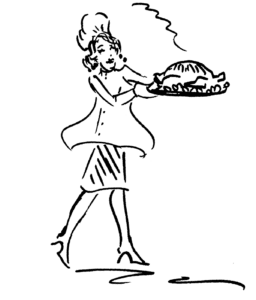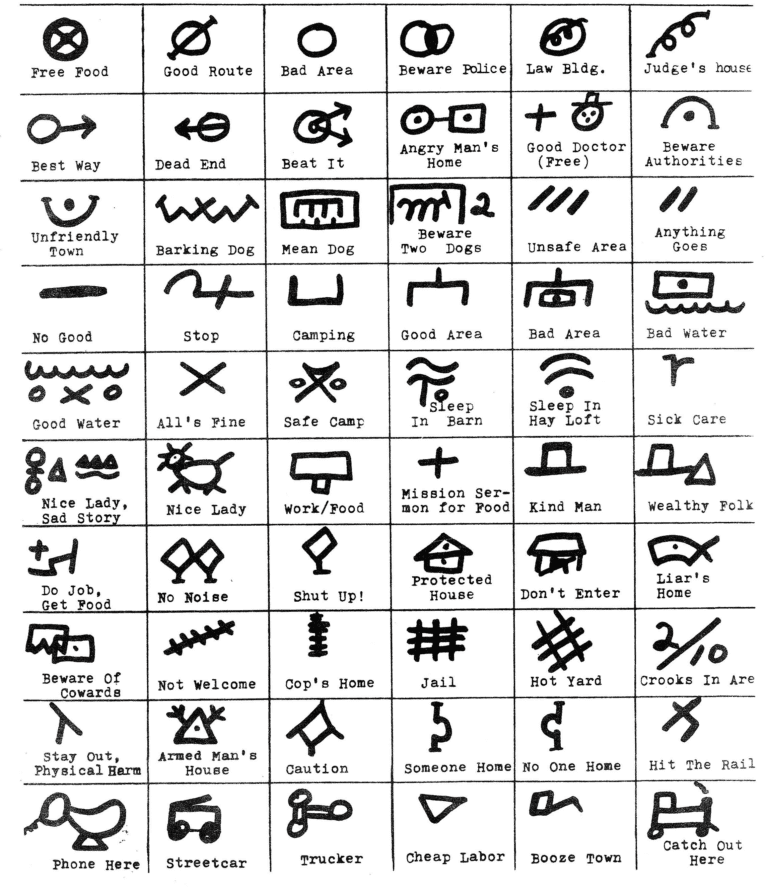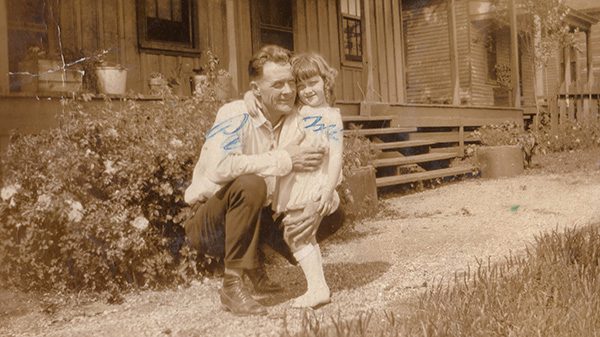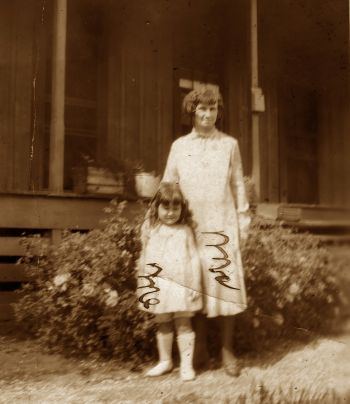
My menu planning for the week began on Monday and was always based on what meat I cooked for the noon-time Sunday “Dinner.” For example, if a large Ribeye Roast was served, I could concoct meals such as Pearlie’s Vegetable Beef Soup, Beef Stroganoff, or Chili. The possibilities were endless.
I always kept leftovers in the fridge; pasta, potatoes and rice on the shelves; frozen vegetables, meats, and chicken broth in the freezer. My Mavis’ Kitchen philosophy was to never let food go to waste. I created daily meals using what I already had in the kitchen. Without my realizing it, I had created a Monday through Sunday cooking lifestyle.
Monday I tried to plan down-home nutritious meals (meatloaf and fresh veggies) since we didn’t adhere to many healthy rules of eating on the weekends. I would take into consideration whatever meat had been served on Sunday so I could use leftovers in meals during the week.
Keep in mind I cooked three meals a day! Granted, weekday breakfasts were rushed getting three girls off to school and a husband off to work, so coffee and a piece of toast could be all I managed. But only a few hours later, Joe came home for lunch … every day for 50 years! I would often make a soup out of leftover roast beef or chicken and perfected the art of cream vegetable soups for hearty lunchtime fare.
Tuesday was some form of Sunday leftovers. My husband Joe didn’t care for leftovers – that is, if he knew he was eating them! Casseroles are your secret weapon to disguise leftovers. The possibilities are endless based on what you already have in your kitchen.
Wednesday was generally my shopping day where I stocked up on basic supplies like potatoes, rice, and pasta for the pantry; fresh vegetables, lettuces, and fruit for the fridge; frozen meats, seafood, and broths for the freezer.
By midweek I liked to shake things up a bit with some kind of seafood, so having frozen fish or shrimp in the freezer, or cans of salmon and tuna fish on hand, allowed me to whip up a fast meal.
Thursday it was time to replenish the meat supply, and chicken became my go-to dish to finish off the week. A boiled or baked chicken would create dozens of meal possibilities. From delicious soups to various pastas to rice dishes to salads, chicken is a kitchen staple to always have on hand.
Occasionally pork would appear on a Thursday night for variety, as well as veal, lamb, or Mexican dishes. A leftover pork roast can also be used in casseroles, vegetable stir fries, or mixed in rice.
Friday was the day Daddy, the “King of the Household,” performed his magic at the barbeque pit. Along with his famous steak, we always had au gratin or baked potatoes, a huge salad, and my once-a-week cake bake. And how wonderful are steak sandwiches during the weekend? I always managed to salvage enough steak to make a beef and vegetable soup for a quick lunch along the way that I would often freeze to use later.
Saturday everyone went his or her own way … unless of course we were having a Saturday night PARTY! And that happened a lot around our house. Teenage dance parties or grown-up cocktail parties filled our lives.
Sunday the big “Dinner” was moved up to noon after church, as is traditional in the South. I would serve a feast that always included a large meat dish, which would provide leftovers for the week.
Sunday evening supper consisted of sandwiches made from the meat served at Sunday “Dinner” and was served on TV trays while watching “ The Ed Sullivan Show.” Sunday evenings were always shared with the Beatles, Elvis, and Frank Sinatra!
The Hobo Code
A pictograph language used by homeless travelers chalked or carved on signs, walls, or fences
that provide tips, advice, and/or warnings for fellow hobos.

During The Great Depression, I remember as a girl, that our house was a “marked house.” That meant that people could come to our house and always find food. “Hobos” of the time would mark a fence, tree, or posts of homes where people were willing to provide a bite to eat, thereby letting other hobos know they would be welcomed.
My mother, Pearlie, always seemed to have something cooking on the stove for anyone who might be hungry. Large pots of soups seemed to always be simmering around my house as they could feed a larger group or unexpected guests. The hobos would come to the back door.
We had a nice bench in our backyard under a pretty tree and my mother would serve them a bowl of soup while they rested. Pearlie never turned anyone away.
While life was hard then, it was a simpler time. My mother never had any fear of the strangers coming by looking for food. We didn’t lock our doors. We didn’t have much either, but she always shared what we had.
That was one of the many things I loved about her.

(1) Mavis’ father Ernest Hollingsworth with a young Mavis during The Great Depression. (2) The Hollingsworth home was a ‘marked’ house letting hobos passing through town know they could get something to eat here. A young Mavis and her mother Pearlie.


